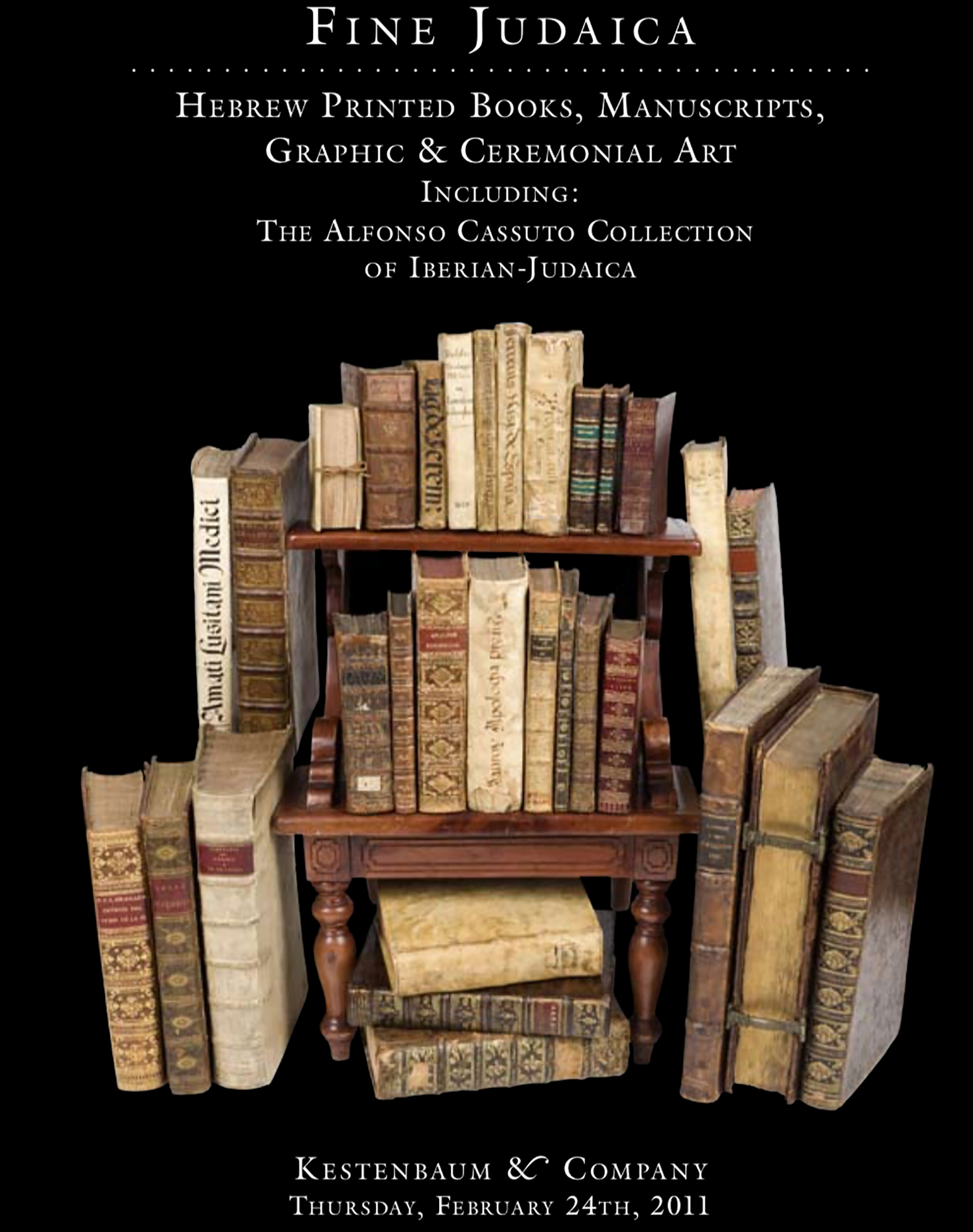(NUNES, PEDRO).

AUCTION 50 |
Thursday, February 24th,
2011 at 1:00
Fine Judaica: Hebrew Printed Books, Manuscripts, Graphic & Ceremonial Art Including: The Alfonso Cassuto Collection of Iberian Art
Lot 331
(NUNES, PEDRO).
Coimbra: Antonius `a Marijs v.d
Est: $20,000 - $25,000
Of Jewish parentage, Pedro Nunes, celebrated Portuguese mathematician, cartographer, and navigator, was born in Alcácer do Sol in 1502. He studied at the Univerity of Salamanca (Spain) and later received a degree in medicine in Lisbon in 1525. In 1529 Nunes was appointed cosmographer to the Crown. He is credited with being the father of modern cartography and made several important contributions to the science of navigation. In 1540, he invented the scale named after him (nonius). It consists of a series of fixed scales mounted on an astrolabe, gradations on each scale are somewhat shifted so that the fractional part of a curve indicates the fractional part of a degree. Nunes moved to the University of Coimbra in 1544 to take up the Chair of Mathematics. This was a new post set up to provide instruction in the technical requirements for navigation, clearly a topic of great importance in Portugal at this period when control of sea trade was the chief source of Portuguese wealth. He was promoted to Chief Royal Cosmographer in 1547 and held this post until his death in 1578.
Cecil Roth notes the irony that despite Nunes's high rank in society, his grandchildren fell into the clutches of the Inquisition. See A History of the Marranos (1932) p. 77; EJ, Vol. XII, p. 1273
Our first work, De arte atque ratione navigandi, is a second improved edition of the book published in 1566 under the different title of Petri Nonii Salaciensis Opera, a compilation of Nunes' works on navigation. At the time, Nunes's book represented the cutting-edge of nautical science.
Our second work, De Erratis Orontii Finaei (first edition 1546), sets out to demonstrate that Oronce Fine's attempts to solve the three classical problems of mathematics - squaring the circle, trisecting an arbitrary angle, and doubling the cube, were incorrect.
Our third work, De Crepusculis, first issued in 1542, addresses a problem posed to Nunes by one of his pupils, Prince Cardinal Henrique (son of Manuel I), who would become King of Portugal in 1578: "Which day has the shortest twilight?" It was this question of the duration of twilight to which the book is devoted
